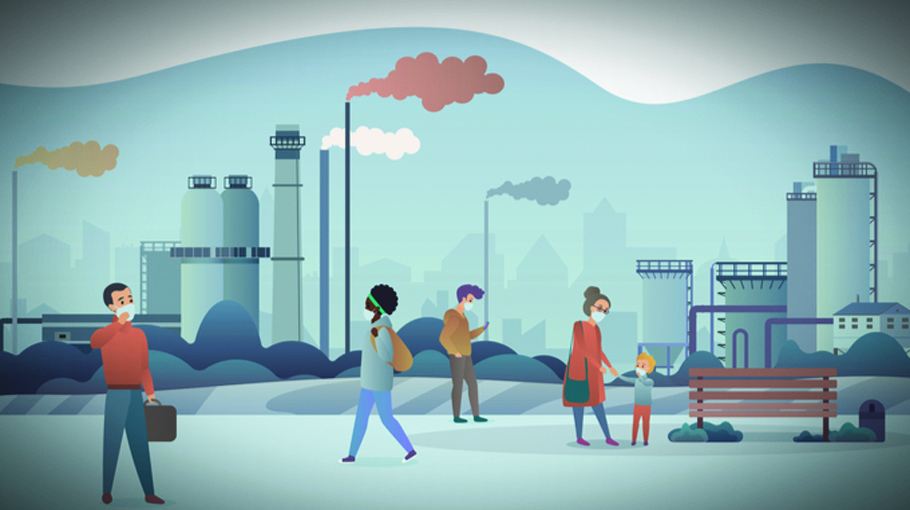Development projects and air pollution
In the last 15 years, the air quality of Dhaka city has degraded quite sharply

The UN General Assembly adopted resolution A/RES/76/8 on November 24, 2021, and declared that Bangladesh has graduated to the developing country grouping from the least developed country (LDC) category. This is a historic milestone in the development journey of Bangladesh and the government of Bangladesh is celebrating 50 years of independence from the country. This is a reflection of the development progress of the country and the National Economic Council (NEC) is planning to allocate Tk 48,802.45 crore out of a total of Tk 225,000 crore for 10 mega projects in the Annual Development Programme (ADP) for the next fiscal year’s budget.
Most of the mega projects are being implemented in and around the capital city of Dhaka, and mega project construction activities release heavily polluted dust into the air. Many studies and reports indicate that most of the construction work did not follow any environmental safety guidelines. According to a report published by the Environment and Social Development Organization (ESDO), approximately 38 per cent of outdoor pollution is caused by construction activities, 22 per cent by landfill and incineration of plastic waste, 17 per cent by industrial processes, 10 per cent by brick kilns, and 8 per cent by the combustion of fossil fuels for road transport and power generation.
The government should
implement new policies
to improve Dhaka’s toxic air
Many studies have shown that unplanned development work and lack of environment safety guidelines are responsible for air pollution in Dhaka. Academicians believe that unplanned road digging and construction account for much of the air pollution in Dhaka.
The urban population of Bangladesh has increased from 8.2 per cent in 1972 to 38.9 per cent in 2021 (UN-World Urbanization Prospect-2021) and it is expected that by 2040 the urban population will be 98.9 million. These statistics indicate that about 50.5 per cent of the total population of Bangladesh will live in urban areas. This rapid urban population growth has far outstripped the capacity of urban infrastructure and is a leading cause of urban air pollution. In the last 15 years, the air quality of Dhaka city has degraded quite sharply, having a severe effect on city dwellers' health.
According to a study conducted by the University of South Asia's department of public health, the quality of air around megaprojects such as the metro-rail and elevated expressway in Uttara is far worse than the air quality without megaprojects, and residents are exposed to serious health risks.
One study showed that around 60 per cent of Dhaka’s air pollution takes place in winter season because most of the development construction is conducted in the winter. Experts suggested for especially regulations to impose on vehicular movement, and on mega project to follow the environment safety measures which also reduce the contribution air pollution in the Dhaka city.
According to evidence, only 2 per cent of Dhaka's total area is covered by green space, while the remaining 83 per cent is occupied by buildings and constructions. Scholars believe that declining greenery and the increase in development are two of the barriers to mitigating air pollution. Roof gardens may be an option to reduce the air pollution that is produced from the mega projects of Dhaka city. Dhaka city mega development projects are responsible for such alarming stage of environmental pollution of Dhaka city. The main reasons are lack of enforcement of environmental laws and lack of awareness.
Recent studies suggest a tri-partite approach to prevent air pollution in Dhaka. Also, recently the High Court (HC) has directed the authorities concerned to identify the most polluted areas in the country and submit a plan to reduce this jeopardy. The court ordered the installation of Continuous Air Monitoring Station (CAMS) at appropriate places for constant monitoring of the air quality and to introduce an alert system for protecting the people from hazardous and unhealthy air.
However, the government should implement new policies to improve Dhaka’s toxic air. Air pollution should be a key issue that the government and policymakers must address in the sphere of sustainable construction.



